Pranay Kumar Myana
Deep Bayesian Bandits: Exploring in Online Personalized Recommendations
Aug 03, 2020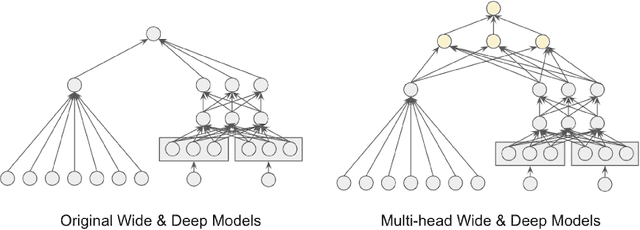
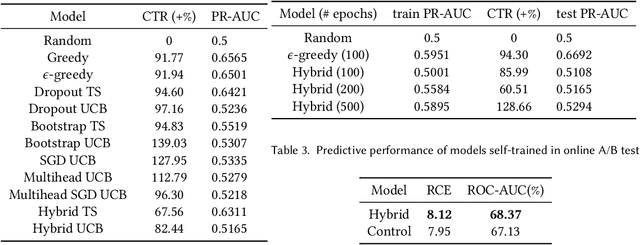
Abstract:Recommender systems trained in a continuous learning fashion are plagued by the feedback loop problem, also known as algorithmic bias. This causes a newly trained model to act greedily and favor items that have already been engaged by users. This behavior is particularly harmful in personalised ads recommendations, as it can also cause new campaigns to remain unexplored. Exploration aims to address this limitation by providing new information about the environment, which encompasses user preference, and can lead to higher long-term reward. In this work, we formulate a display advertising recommender as a contextual bandit and implement exploration techniques that require sampling from the posterior distribution of click-through-rates in a computationally tractable manner. Traditional large-scale deep learning models do not provide uncertainty estimates by default. We approximate these uncertainty measurements of the predictions by employing a bootstrapped model with multiple heads and dropout units. We benchmark a number of different models in an offline simulation environment using a publicly available dataset of user-ads engagements. We test our proposed deep Bayesian bandits algorithm in the offline simulation and online AB setting with large-scale production traffic, where we demonstrate a positive gain of our exploration model.
Model Size Reduction Using Frequency Based Double Hashing for Recommender Systems
Jul 28, 2020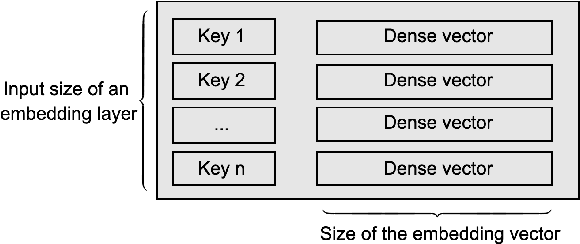



Abstract:Deep Neural Networks (DNNs) with sparse input features have been widely used in recommender systems in industry. These models have large memory requirements and need a huge amount of training data. The large model size usually entails a cost, in the range of millions of dollars, for storage and communication with the inference services. In this paper, we propose a hybrid hashing method to combine frequency hashing and double hashing techniques for model size reduction, without compromising performance. We evaluate the proposed models on two product surfaces. In both cases, experiment results demonstrated that we can reduce the model size by around 90 % while keeping the performance on par with the original baselines.
Addressing Delayed Feedback for Continuous Training with Neural Networks in CTR prediction
Jul 15, 2019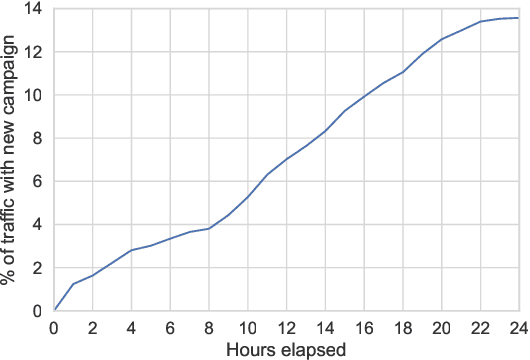
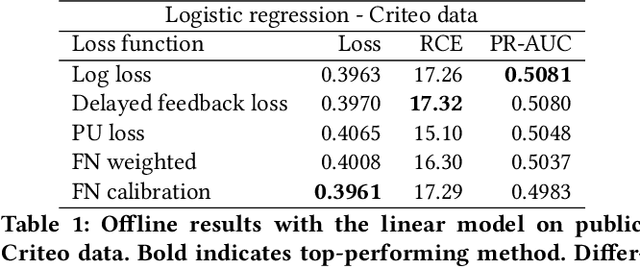
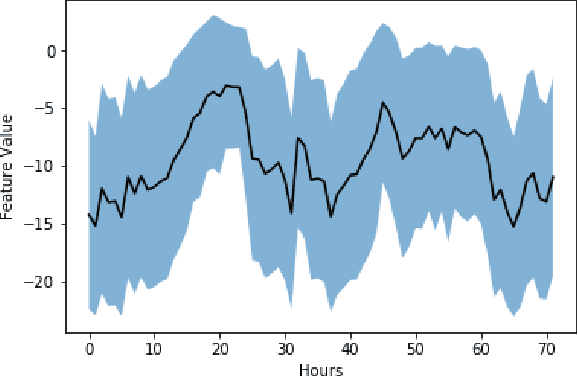
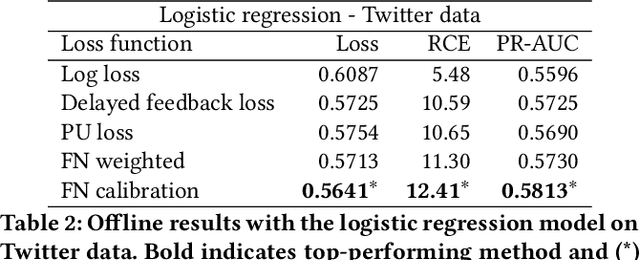
Abstract:One of the challenges in display advertising is that the distribution of features and click through rate (CTR) can exhibit large shifts over time due to seasonality, changes to ad campaigns and other factors. The predominant strategy to keep up with these shifts is to train predictive models continuously, on fresh data, in order to prevent them from becoming stale. However, in many ad systems positive labels are only observed after a possibly long and random delay. These delayed labels pose a challenge to data freshness in continuous training: fresh data may not have complete label information at the time they are ingested by the training algorithm. Naive strategies which consider any data point a negative example until a positive label becomes available tend to underestimate CTR, resulting in inferior user experience and suboptimal performance for advertisers. The focus of this paper is to identify the best combination of loss functions and models that enable large-scale learning from a continuous stream of data in the presence of delayed labels. In this work, we compare 5 different loss functions, 3 of them applied to this problem for the first time. We benchmark their performance in offline settings on both public and proprietary datasets in conjunction with shallow and deep model architectures. We also discuss the engineering cost associated with implementing each loss function in a production environment. Finally, we carried out online experiments with the top performing methods, in order to validate their performance in a continuous training scheme. While training on 668 million in-house data points offline, our proposed methods outperform previous state-of-the-art by 3% relative cross entropy (RCE). During online experiments, we observed 55% gain in revenue per thousand requests (RPMq) against naive log loss.
 Add to Chrome
Add to Chrome Add to Firefox
Add to Firefox Add to Edge
Add to Edge